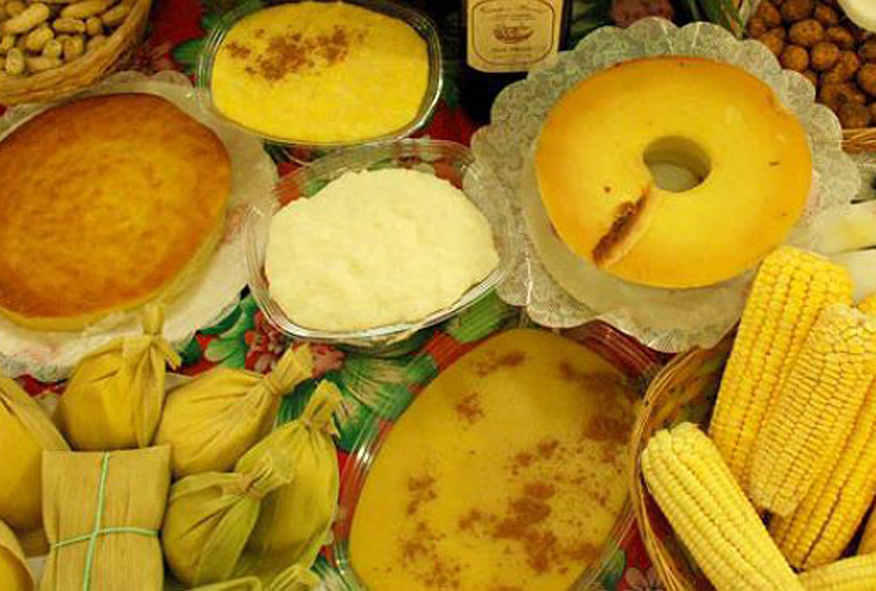FESTAS JUNINAS/JUNE PARTIES PT EN
 •
by
•
by Razzor Giovanni
No Brasil, desde pelo menos o século XVII, no mês de junho, comemoram-se as chamadas “Festas Juninas”, que possuem esse nome por estarem associadas ao referido mês. Sabemos que, além daquilo que caracteriza tais festas, como trajes específicos, comidas e bebidas, fogueiras, fogos de artifício e outros artefatos feitos com pólvora (como bombinhas), há também a associação com santos católicos, notadamente: São João, Santo Antônio e São Pedro. Mas quais são as raízes das festas juninas?

Origem das festas juninas:
Os pesquisadores especializados em festividades e rituais costumam apontar as origens das festas juninas nos rituais dos antigos povos germânicos e romanos. Os povos que habitavam as regiões campestres, na antiguidade ocidental, prestavam homenagens a diversos deuses aos quais eram atribuídas as funções de garantir boas plantações, boas colheitas, fertilidade etc. Geralmente, tais ritos (que possuíam caráter de festividade) eram executados durante a passagem do inverno para o verão, que, no centro-sul da Europa, acontece no mês de junho.
Esses rituais implicavam o acendimento de fogueiras e de balões (semelhantes aos que hoje são feitos com papel de seda), entre outros modos de comemorações, como danças e cânticos. Na transição da Idade Antiga para a Idade Média, com a cristianização dos romanos e dos povos bárbaros, essas festividades passaram a ser assimiladas pela Igreja Católica, que, como principal instituição do período medieval, soube também diluir o culto aos deuses pagãos do período junino e substituí-los pelos santos. A religiosidade popular absorveu de forma muito profunda essa mistura das festividades pagãs com a doutrina cristã. Nas regiões do Sul da Europa, sobretudo na Península Ibérica, onde o catolicismo desenvolveu-se com muita força no fim da Idade Média, essas tradições tornaram-se plenamente arraigadas.
Festa Junina no Brasil
Com a colonização do Brasil pelos portugueses a partir do século XVI, as festividades juninas aqui foram se estabelecendo, sem maiores dificuldades, e ganhando um feitio próprio.
As comemorações das festas juninas no Brasil, além de manterem as características herdadas da Europa, como a celebração dos dias dos santos, também mesclaram elementos típicos do interior do país e de tradições sertanejas, forjadas pela mescla das culturas africana, indígena e europeia. Sendo assim, as comidas típicas (como a pamonha), as danças, o uso de instrumentos musicais (como a viola caipira) nas festas, etc., tudo isso reflete milênios de tradições diversas que se fundiram.

Diante de toda situação de pandemia que nos encontramos desejo a todos boas festas juninas e aproveitem para curtir em família.
Att: Cel Razzor Giovanni
English version
In Brazil, since at least the 17th century, in the month of June, the so-called “Festas Juninas” are celebrated, which have this name because they are associated with that month. We know that, in addition to what characterizes such parties, such as specific costumes, food and drinks, bonfires, fireworks and other artifacts made with gunpowder (such as firecrackers), there is also an association with Catholic saints, notably: São João, Santo Antônio and Saint Peter. But what are the roots of the June festivities?

Origin of the June festivities:
Researchers specializing in festivities and rituals usually point to the origins of the June festivities in the rituals of the ancient Germanic and Roman peoples. The people who inhabited the countryside, in Western antiquity, paid homage to various gods who were assigned the functions of ensuring good plantations, good harvests, fertility, etc. Generally, such rites (which had a festive character) were performed during the passage from winter to summer, which, in central-southern Europe, takes place in June.
These rituals involved the lighting of bonfires and balloons (similar to those made today with tissue paper), among other modes of celebration, such as dances and songs. In the transition from the Ancient Age to the Middle Ages, with the Christianization of the Romans and the barbarian peoples, these festivities started to be assimilated by the Catholic Church, which, as the main institution of the medieval period, also knew how to dilute the cult of the pagan gods of the June period and replace them with the saints. Popular religiosity absorbed this mixture of pagan festivities with Christian doctrine very deeply. In the regions of southern Europe, especially in the Iberian Peninsula, where Catholicism developed very strongly in the late Middle Ages, these traditions have become fully ingrained.
Festa Junina in Brazil
With the colonization of Brazil by the Portuguese from the 16th century onwards, the June festivities were established here, without any major difficulties, and gaining their own character.
The celebrations of the June festivities in Brazil, in addition to maintaining the characteristics inherited from Europe, such as the celebration of the days of the saints, also mixed elements typical of the interior of the country and of backland traditions, forged by the mixture of African, indigenous and European cultures. Thus, typical foods (such as mush), dances, the use of musical instruments (such as viola caipira) at parties, etc., all reflect millennia of diverse traditions that have merged.

In the face of any pandemic situation that we find ourselves, I wish you all happy June festivities and enjoy your family.
Att: Cel Razzor Giovanni


Comments
https://www.erepublik.com/en/article/festas-juninas-june-parties-pt-en-2719964
FESTAS JUNINAS/ JUNE PARTIES
En que ayuda a Hitmancito este tipo de informacion.
HitmanPole
V+
Saudades do correio-elegante rs
Correio elegante ? Nossa foi longe hein rsrs
Por isso a saudade hahaha
Melhor parte da festa hahah
Saudades paçoca......
Paçoca
Melhor guloseima 😌
V+
o7
Muitoo Bom as Festas Juninas
V+
Vontade de tomar um quentão e dançar um forrózinho kk
Somos dois rsrs
visto v+
Nesse ano, sem fogueira - meio perigoso no apartamento. Também porque começou o inverno com calor de verão.
Votado meu amigo!!!
V+
O7
ARENA SEMPRE RAZZOR
Muito legal! V+
AMO TUDO ISTO .... Principalmente o Forrozim
Haaaa o forrozin 🥰
votado y suscripto